THE FIRST PRESIDENT AND THE FOUNDER:
Mr, Angel Rodriguez Ruiz:

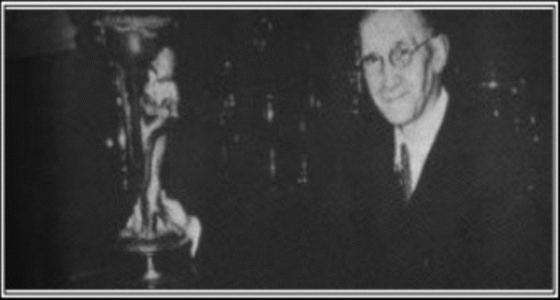 
The Reial Club Deportiu Espanyol de Barcelona is one of the oldest football clubs in the Spanish Liga. On October 28, 1900, in the classrooms of the University of Barcelona, he was born the Spanish Society of Football, name that gave the club its founder and first president,
Angel Rodriguez. The main identity, and what determined the original name of this new sports club, was that all components Catalan or were born in other Espanya, as opposed to other teams,
formed mainly by British and other nationalities ...

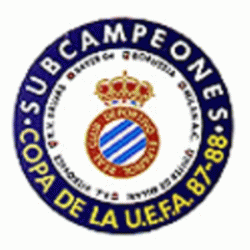 
WE GIVE A SMALL REVIEW PER HISTORY OF L'REAL CLUB SPORTIU ESPANYOL DE BARCELONA:
The Royal Spanish Sports Club (officially and in Catalan Reial Club Deportiu Espanyol of Barcelona S. A.) is a multi-sports entity with headquarters in Barcelona, ??Spain. It was officially founded as a football club on October 28, 1900 by a group of local students of the University of Barcelona under the name of Spanish Society of Foot-ball.
MEDAL OF SUBCAMPEONES YEARS 87-88:
At the moment it participates in the maximum category of National Professional Football League, the First Division of Spain or Liga BBVA, having disputed a total of 81 editions and obtaining like better result to finish in the third position in four seasons. In the Copa del Rey, the club has been champion in four opportunities and was runner-up five times. At the regional level, he has won the Macaya Cup once, the Catalan Championship eight times, and the Catalunya Cup in six opportunities. Internationally, his records in European competition reflect two UEFA Champions League sub-championships - formerly the UEFA Cup - as the best result.
It is by foundation the fifth most active active club in the country. Governed by the Royal Spanish Football Federation (RFEF) at national level, and by the European Union of Football Associations (UEFA) and the International Football Association (FIFA) - the largest football organization - internationally, Participants of the first edition of the largest Spanish competition today, the League championship. Two of its historic players had the honor of being the first scorers in both the League and the Spanish Cup Championship.
Initiated as a football club, soon acquired a multi-sport character that led him to develop several disciplines within the entity, lasting many of them still today, recognized as one of the sports organizations with more partners in Spain than in the Season 2009-10 the figure of 35 500 subscribers, one of the most followed.

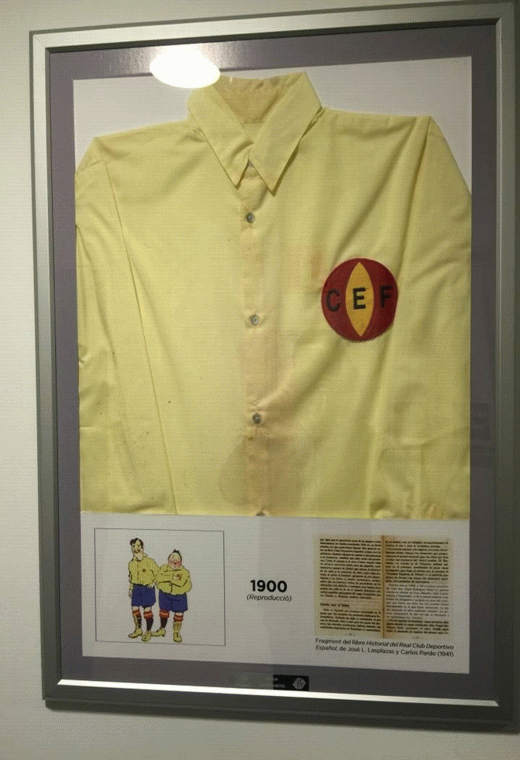 
Identified by the colors blue and white of his uniform, this was not however the first one he carried. The first sweaters or shirts were yellow, as one of his managers gave them a piece of cloth left in his particular business of that tone. It was not until 1909 that he adopted the characteristic vertical blue-white stripes, as a representation of those worn by Admiral Roger de Lauria on his coat of arms. Since 1992, the date of the reform of the Sports Law, the legal form of SAD, with a share capital of the company currently amounts to EUR 24 439 616.20 divided into 406 641 shares whose value Nominal amount is 60.10121, being fully subscribed and paid up. The total number of shareholders is 13 431, being the legal responsible of the club.
R.C.D.ESPANYOL-B:

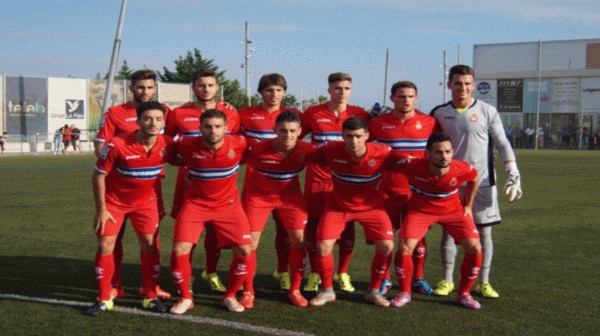 
Since 1991 it has its own subsidiary team, the Real Club Deportivo Español "B", a function that since 1930 was carried out by other companies outside of it through collaborative agreements. In spite of the belated foundation of the second team, it had from previous decades with some inferior categories or of formation, reflected at the present time with the sporting area of ??the RCD Espanyol and considered like one of the best and more prolific quarries of the national territory.
Mr, ANGEL RODRIGUEZ RUIZ:

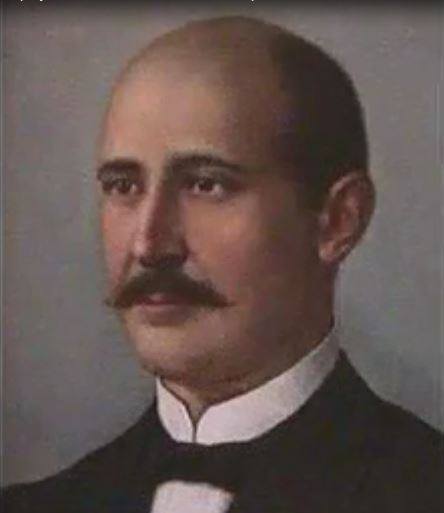 
Ángel Rodríguez, founder and first president of the club
At the end of the nineteenth century several clubs were founded for the practice of football, a sport that came from England and began to practice in Spain. In September of 1900 the Barcelona soccer clubs - as it would be Castilianized the term years later - were formed essentially by foreign players, besides not admitting new players in the heart of its entities, reason for which the industrial engineer of the state Mr. don Ángel Rodríguez Ruiz, Octavio Aballí and Luis Roca decided to form a new club dedicated to such practice. Thus they were affiliated to the Spanish Gymnastic Society and whose president was the professor of the University of Barcelona and father of Angel Rodriguez, Rafael Rodríguez Méndez. This group of three friends were known as "the three musketeers", who were joined by a fourth member, Joaquin Carril, who also had the honor of being the first captain of the new team.
October 28, 1900 was established as the official foundation date of the Spanish Foot-ball Society, as indicated by the weekly newspaper Los Deportes, although it is true that according to the direct testimony of Carolina Rodríguez, daughter of the founder , The club was established on the 13th of that month. The name was chosen because the other existing entities of the city, the Catalá Foot-ball Club, the Foot-ball Club Barcelona and the Hispania Athletic Club had already used geographical references or representative of the location and origin of the same ones. So it was opted for this because of the particular circumstance that they were erected principally to accommodate national players who wanted to practice the new sport, and that other clubs deprived them of doing so because they were not Catalans or foreigners.
To a remarkable majority of Catalans, a pair of Basques joined together and an Andalusian, conferring to the equipment the Spanish dyes to them, and began to dispute with hardly preparation the first parties. The dress was yellow shirt and pant and black stockings. The competitions are recorded on 11 and 18 November against the Foot-ball Club Catalá, on the 25th day before the Hispania Athletic Club, the 8th of the following month again against the same squad and on the 9th against the Sports Society Santanach. The players who appeared as first members were: Rafael Balmes, Carril, Telesforo Álvarez, Aballí, Luciano Lizarraga, Enrique Montells, Joaquín Sánchez, Ángel Ruiz, Ángel Rodríguez, Gaspar Munner and Ángel Ponz, besides others like Juan Alcalá, Joaquín Escardó, Marià Galobardes and Miguel Bernat
This came to 23 December, the day in which the first confrontation with which years later would be his staunch rival, the Foot-ball Club Barcelona. Disputed in the blaugrana field of Casanovas, the encounter finalized with a tie to zero goals. These meetings were used to fire before appearing in what was the first official soccer competition in Spain, the Copa Macaya.

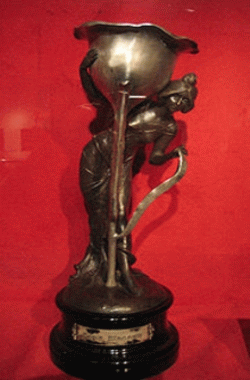 
First official contests:
According to the few sources collected from the championship, the team retired in mid-March for supposed favors to the organizing team, when it was the third classified. Before, there were two notable events in the short history of the entity, when the name of the club changed on January 13 and when the 27th came the first official Barcelona derby - as the meetings against FC Barcelona decades later- . The first of these was due to the absorption of the football section of the SD Santanach, as the Spanish Football Club and the Catalunya Football Club were merged between them to originate the Irish Foot-ball Club, thus leaving free the name by which Would be known in future the society: the Spanish Club of Foot-ball. The second, corresponding to the first edition of the mentioned Macaya Cup recorded a 4-1 defeat of the Spaniards, against an overly internationalized squad. Munner was the author of the first of the Spaniards in official competition.
Final consolation of the «Coronation Cup» against the Madrid Football Club.
The change of denomination brought with it also the change of clothing, which happened to be of white shirt, blue calzón, and means of the same color with return of the national flag. It is under this new identity as it becomes known to the rest of the national territory when in 1902 was disputed the first inter-regional championship of clubs: the Madrid Competition Foot-ball. Received the invitation by the Madrid Foot-Ball Club, organizer of the event, participated together with F. C. Barcelona, ??the Bizcaya Club and the New Foot-ball Club.
To be nones, a lottery determined that they had to play a previous eliminatory against the Basque set, final winner of the match for a result of 5-1 in the Hippodrome de la Castellana and the winner of the event. Ángel Ponz was the author of the first goal of the history of which was the embryo of the future Spanish Cup Championship. After being eliminated in his first encounter, at the end of the tournament he disputed a consolation trophy to dictate the second place finish Against Madrid FC, after refusing to participate the rest of losing teams. A result of 3-2 favorable to the locals prevented them to win their first prize, the one of the Glass of the Big Rock. A third and a fourth place are his other rankings in the Macaya Cup and the Spanish Gymnastics Federation Medal of the same year.

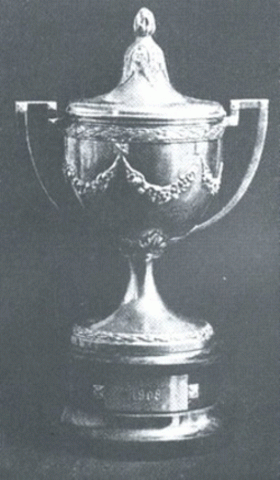 
Football began to give symptoms of organization and seriousness, and after the success harvested by the competition took place the following May the inauguration of the first national competition of clubs in Spain: the Championship of Spain-Copa del Rey. Once again organized by the Madrid F. C., the Catalans accepted the invitation being reinforced by some members of the Ibèria Foot-ball Club.
In it, played in triangular format, they lost their two matches by thrashing against the promoters and Basque Athletic Club, final winner. Joaquín Cenarro was the author of the only goal scored by the team. Another notable event occurred on February 23, 1903, when the Madrid team returned the visit to face the Spaniards and ended with a draw to zero.
As for the regional competitions, that same year the club won the Copa Macaya, winning the winner of the last edition and stayed with her. In parallel, also disputed the first edition of the Glass Barcelona in which it was runner-up. Both competitions would be extinguished to give way to the Championship of Catalonia.
A few years before, the Football Clubs Association of Barcelona (ACF) was formed and since 1904 it has organized this competition. The team showed signs of being at the best of its short history, and proclaimed winners after playing 16 games, 15 of them with a victory, and tie the rest. Unbeaten and with 83 goals in favor were placed like the best set of Catalonia, fact that did not presage the events that were to arrive.
Suspension of activities and refoundation (1906-1920)

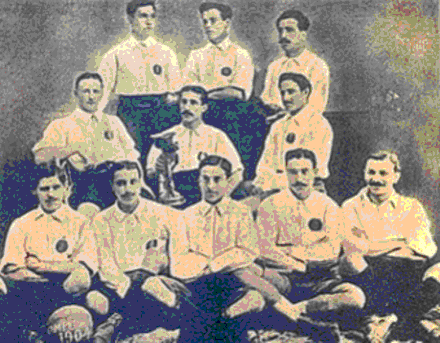 
Team champion of the Championship of Catalonia of 1904.
On 31 December 1904 they played their first game against an international club: the Stade Olympien des Étudiants of Toulouse French finishing with a score of 7-2 for the locals. The fact was one of the last that foreshadowed a great future for the entity before being forced to a sudden cessation of activities.
The event, produced on January 7, 1906 was due to the march of many of its members abroad to continue their studies, making it necessary to remember the origin of the club by the hand of some university students. Thus, and with insufficient strength to face any party, they had to make such a drastic decision when they were in their best social and sporting moment. The few remaining players entered the ranks of Football Club X, with whom he maintained very good relations.
Thus it was maintained until 1909, date in which some of the emigrant players returned to Barcelona to find a desolating panorama. It was then that those who marched to Football Club X - led as X Sporting Club - and some members of the Spanish Club Ju-Jutsu (Jiu-jitsu) joined the students to resume the practice of football. The incorporation of the sections of fencing, boxing, jiu-jitsu and a recreational section dedicated to the art of felling were also achieved, all coming from the Spanish fighting club. This was how the entity became a sports center and welcomed new sports branches between the already recognized football, thanks especially to the work of Emilio Sampere - one of those who marched and returned from the X Sporting Club - and Julià Clapera - founder of the club Jiu-jitsu.

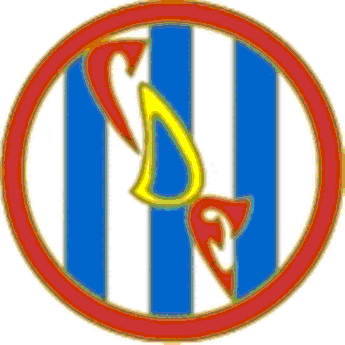 
With the new character and the new members of the reborn entity, it was decided in the assembly of partners to change the name to the Club Deportivo Español, and to vary the white color of the old uniform for one with stripes blue, complete with a pair of pants and Black stockings It was not known then, but that shirt remained since then for history as the representative colors of the club. The reference taken was that of the coat of arms of Admiral Roger de Lauria, a military hero of the Crown of Aragon who stopped the conquest of the French of Catalonia.
RUGBY TEAM:

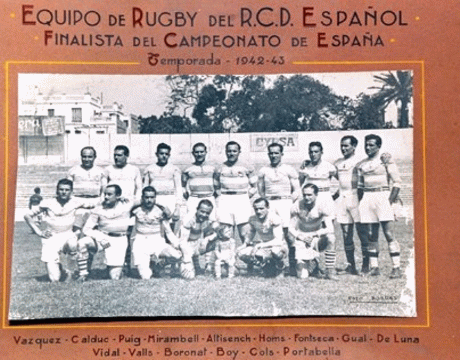 
In May of 1911, the sport of rugby was practiced for the first time in the club, being also a novelty in the city and the country. Formed by the majority of members of the soccer squad, he faced the Patrie fracés, proving that the Catalan entity returned to enjoy good health. Days later he incorporated three foreign players - being the pioneers in his discipline - from the Plumstead Football Club in London, invited to contend in a celebration with several demonstrations of encounters of both modalities. Frank Allack, William Hodge and Raine Gibson set the course for the professionalism of the club, which was then governed by amateur status, to which the brothers Charles and Percival Wallace would later join.
A royal club
A year later the club experienced two events. The first, as was to consecrate champion of a tournament eight years after the last to win his second Championship of Catalonia thanks to the contribution of the English, As well as the granting on April 25, 1912 of the title of «Real» by the monarch Alfonso XIII and by which the club since then would be named as Real Club Deportivo Español.
1912 champion team with the first foreign players of the club.
Two executives gave an important impulse to R. C. D. Spanish of that time and mainly in the economic aspect, Messrs. Evelio Doncos and Genaro de La Riva. Once again established as one of the football references in Catalonia, he had great disputes with the FC Barcelona and a new club emerged, Football Club España, and among the three were shared the successes of successive editions of the Regional Championship.
In June of 1915 the club embarks for the first time in a tour. The chosen destination is the neighboring Portugal, where he played a total of three matches, two against Sport Lisboa and Benfica and one against a selected Lisbon, with results both of 1-2 against the benfiquistas and by 1-4 against the combined . The reason was to promote abroad after his recent successes, to which he added a new regional championship, a Barcelona Cup and a runner-up Copa del Rey, second of its history.
With the withdrawal of the big names, which did not detract from the team's ability, the captain Pere Gibert or Emilio Sampere appeared on the squad only as great references. It remained so, until a young Ricardo Zamora from the Universitary Sport Club appeared in the club, resulting from a merger of two medical and science student clubs. The sixteen-year-old who left the club at nineteen to finish his studies, was convinced to resume sporting practice by rivals FC Barcelona, ??who however could not hold him and the player returned again to become a recognized goalkeeper, and Before appearing in the Madrid FC, being these two clubs that elevated him like one of the historical figures of the Spanish and international soccer. The player debuted precisely in a Spanish-Madrid match on April 23, 1916.
The player conquered the Catalan Championship of 1918, which would be the last of the club before a long drought caused by the march of four of his best players, among which was the goalkeeper.
The purchase of Sarriá and the consolidation of the club in the 20's.
At the turn of the 1920s, RCD Espanyol was by its own right the second most recognized football club in Catalonia, obtaining the regional championships of 1904, 1912, 1915 and 1918. At that time it was only surpassed by FC Barcelona . After the demolition of the Muntaner street, the De La Riva family bought for 170 000 pesetas from the time the estate Can Rabia,

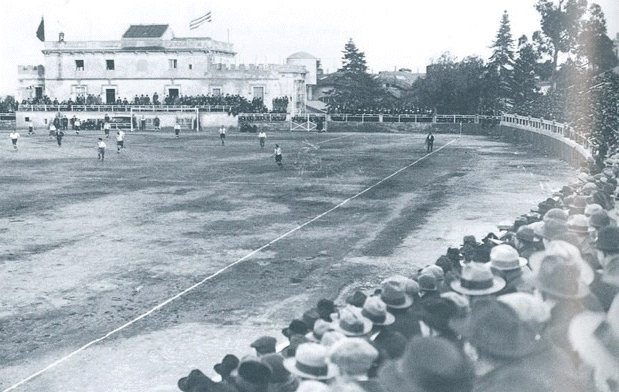 
Where on February 18, 1923, the Sarriá Stadium was inaugurated, equipped only with the essential facilities paid by the directive, as the construction company to which a significant part of the money had been advanced broke. Over time, this stadium became a mythical space for club and fans.
The decade was full of successes for the club, which played several matches against international teams, among which were played against VfR Neumünster, Imperial Lisbon, Sportovní klub Cechie Karlín, Athletic Club Sparta Praha, Fotbalový Klub Viktoria ikov And the Nuselský Sportovní klub. The club made a trip in 1925 in Portugal and the Canary Islands where he signed player José Padrón, and at the end of the season embarked on a tour of America and Central Europe that served to finance the grandstand of the stadium. During the trip disputed encounters against the Argentine selection and the Uruguayan selection, in which there was a great expectation, taking advantage of the fame achieved by Ricardo Zamora.

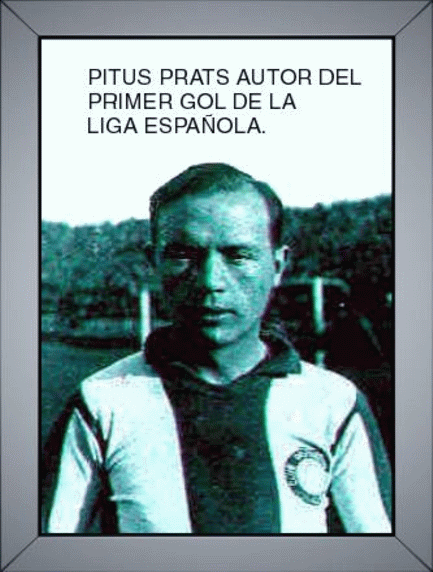 
PITUS PRAT, first scorer of the league championship
Ricardo Zamora, one of the best goalkeepers in history.
Gesturing the creation of a national league championship in the country, the Spaniards managed to win their first Spanish Cup Championship, which gave them the right to be one of the participants in the first edition of the league that began that same season; Being thus one of the 10 teams with the privilege of having participated in historical edition. In addition to this event, the club entered the history of Spanish football after marking Pitus Prat the first official goal of this competition in the match against Real Union of Irún that ended with two goals to one in favor of the Catalans. At the end of the season 1928-29, Patricio Caicedo was honored, who became for many years the coach of the team, while in contrast to the joys, we had to lament the transfer of Zamora to Real Madrid Club de Fútbol in the Year 1930 by the record number of 100 000 pesetas of the time, having been the most outstanding figure of the establishment during the decade.
Without any doubt, it was the R. C. D. Spanish team that suffered more casualties among the clubs of the city in their partners and athletes during the Spanish Civil War and the structures of the Club were greatly reduced. During the war, the club participated in two friendly championships. In the Free Spanish Cup in 1937, the blue-and-white set came in third place in a league of four teams, ahead of Gerona Football Club and behind Valencia Football Club and Levante Football Club, the latter winner of the tournament. In the Mediterranean Football League, also played in 1937, R. C. D. Spanish finished second in an eight-team league with just one point of the champion, the Football Club Barcelona. They completed the following teams: Gerona F. C., Valencia F. C., Levante F. C., Gimnástico Football Club, Granollers Sport Club and Athletic Club de Castellón.
The R. C. D. Spanish during the post-war period:
The postwar period begins with a great success for the club, rising with its second Spanish Cup in 1940, named then Generalissimo Cup by beating the final to Real Madrid by two goals to one. It was also played in 1940 which is the precedent of the Supercopa de España of Football, denominated Cup of Champions of Spain that was lost before Athletic Aviation by a global of 10 goals to 4 favorable to the madrileños. In the seasons 1943-44, 1944-45 and 1946-47 three great players of the club retired: Pere Solé, Crisanto Bosch and Alberto Martorell, and by this fact the club made them tributes. In December 1949 the R. C. D. Spanish moves to the Philippines where he plays a series of friendly encounters. Julià Clapera, the club's number 1 partner, realizes that in October 1950, the 50th anniversary of the founding of the club was completed, but it is an early celebration because, due to the suspension
Suffered the club should not be held until October 1953.
The first event of that event was a baseball game that faced the Spanish RCD against the North American team of Wiesvaden Flyers and ended with a visiting victory for 19 races to 5. The commemorating football match is played on March 29 against Malmö FF Swedish, in which the blue-and-white team won by 3 goals to 2 with an alignment that maintained the initial philosophy of not incorporating foreign players. In July 1951 Sarriá enlargement works began, and the stadium, which belonged to the family of La Riva, became the property of R. C. D. Spanish presided by Francisco Javier Sáenz. During the fifties he played another of the great myths of the club, the Andalusian Julian Arcas and also the Argentine coach

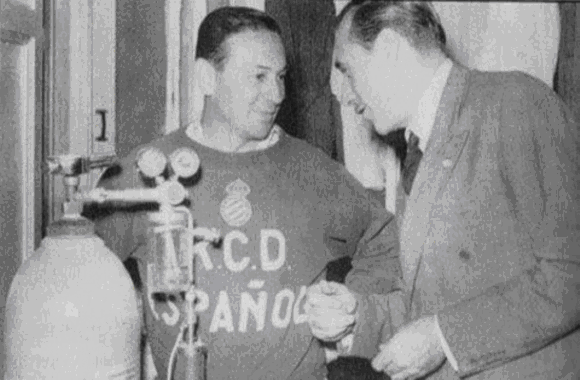 
Alejandro Scopelli, who will make great seasons in the club and that became famous for making breathe oxygen to his players during the breaks of the parties. Another curious fact of this time occurred the 14 of December of 1952 in a Barcelona derbi disputed in barcelonista terrain. The R. C. D. Spanish, came undefeated leader and with a six point advantage over FC Barcelona. When they arrived in the dressing room, the players of blue and white found something unusual, because inside it was a great smoke produced by the burning of towels and not having hot water. During the match and after advancing the "pericos", some supporters azulgranas jumped to the field. The Civil Governor of the time forced the players of R. C. D. Spanish to finish the game although these refused. Finally, the party ended the victory Barca by 2 goals to 1. The players "pericos" left indignados by the 'bad arts' used by his eternal rival.
The Years 60s:
The decade of the 60 begins with a trip to the United States of America and Canada to take part in the second American league of New York in July of 1961. The first party was disputed the 4 of July in Montreal before the Canadian Concord in the Molson Stadium with final result of tie to a goal. The second match was against AS Monaco with a Spanish victory by three goals to one also in Montreal. For the third party and already in New York, the R. C. D. Spanish faced the Shamrock Rovers Football Club of Ireland that beat 4-1 at the Polo Grounds baseball stadium. The fourth encounter would arrive on July 12 in the same New York stage, against the Red Star Belgrade, who cut off the good march of the then disciples of Ricardo Zamora by defeating them by a forceful 7-2. On 16 July, again at the Polo Grounds, the 5-1 defeat to Dukla Prague took the Spanish team away from any qualifying option for the final. Already without chances the 3-0 defeat against Rapid Vienna before ending the participation with the seventh and last game against the Israelites of the Petah Tikvah on July 27, with a Spanish victory by 4-1, both disputed Again at the Polo Grounds in New York. After the seven games, R. C. D. Español finished their place in fifth place in their group, tied to 7 points with the Red Star Belgrade after accumulating three victories, three defeats and a draw. Before crossing the pond back home, the team would travel to Chicago to play a friendly match at Soldier Field, a 5-4 loss to the Vienna Rapid.
The season 1961-62 the team participates for the first time in the Fairs Cup, in which it is eliminated in quarters of end. In the regular league, the team has a poor track record and take charge of the team Ricardo Zamora and Julian Arcas, but they can not avoid the team's first downturn to Second Division. The following season, the man who trained the Real Valladolid Club de Fútbol had sent to R. C. D. Spanish to Segunda, Heriberto Herrera, and recovered the division lost the previous season. A notable event for the entity was the 1964-65 season in which Argentina's Alfredo di Stefano was signed. The previous season also had fichado to Ladislao Kubala. During the following year the team participated again in the Glass of Fairs being eliminated again in quarters of end.

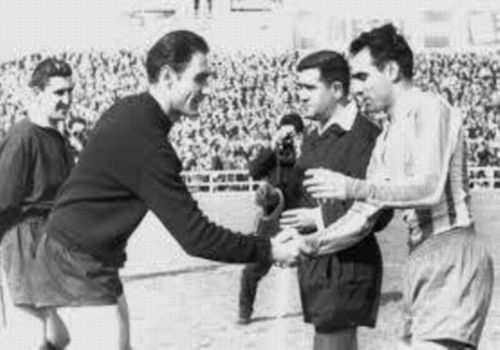 
This picture is made in Sarria, and it is the draw of fields whose captains are Argiles and Ramallets, almost nothing 2 great soccer figures one of ESPANYOL and the other of Barcelona, as always, in these games a very intense game was displayed between two teams

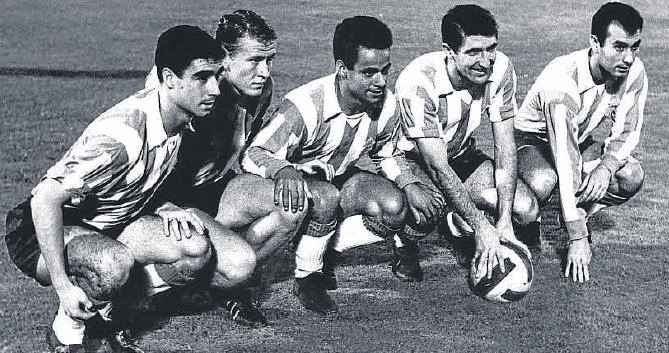 
In the summer of 1966 he became president Joan Vilà Reyes. During this time the famous Spanish front was created that would go down in the history of the club under the name of "the 5 dolphins", that in fact were six; Amas, Marcial, Cayetano Re, Rodilla, José María and Miralles.

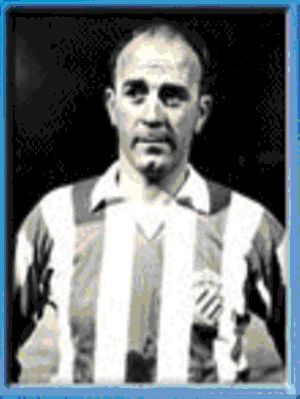 
In the decade of the 60 to the 70 the ESPANYOL signs to the ex- player of R.MADRID Alfredo Di'estefano which surrendered to a rate as high as when he was 10 years younger and gave many afternoons of joys for his game on the Cespet of Sarria:

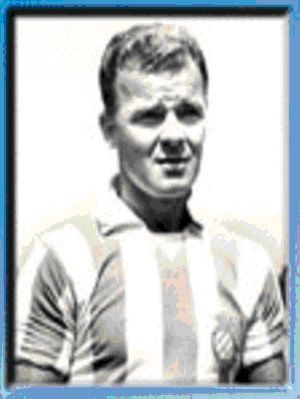 
In the decade of the 60 to the 70 the ESPANYOL signs to the ex- player of the BARÇA Ladislao Kubala that made us a demonstration of throwing faults with over the barrier to the long stick of the doorman, that none could arrive since it put the ball by all the squad , and when I finish as a player I go to the bench as a coach,
and with him on the bench his son debuted, who unfortunately did not have the quality of his father, but Kubala if he left his quality in Sarria:
The Years70's:
In June of 1971, and with Jose Emilio Santamaría like trainer, the R. C. D. Spanish returns to be pioneer realizing a tour by Soviet Union. It started playing in Kiev against FC Dinamo Kiev, being defeated by the Ukrainians by 3 goals to 0. It continued the tour by Leningrad, to face Zenit of Saint Petersburg, finishing the party with tie to zero. In order to play the last match of the tour, the team moved to Moscow, to play against the Torpedo of Moscow, being also the final result of tie to zero. Despite not having won any game or winning a goal, the experience was considered positive and with this trip to the USSR the club began to open doors for the rest of the world.
With Santamaría in the bench great campaigns are realized in the Spanish league. In this decade, after the change of format of the Glass of Fairs, that happens to be the Glass of the UEFA, participates the seasons 1973-1974 and 1976-1977, being eliminated in the eighth of end. At the end of the 1979-80 season, the club made a successful tour of the Far East, where it played in the cities of Tokyo and Manila. In the Japanese capital, the club participated and was proclaimed champion of the International Tournament of Tokyo; First faced Fujita Tokyo, beating him by 2 goals to 0. Then and by the same result got rid of the Selection of soccer of China and finally faced the English set of Middlesbrough Football Club to which defeated in the batch Of penalties after finishing the regulation game with tie to one. From Tokyo the team moved to Manila, where they faced in two friendly matches to the Lioaning, which defeated by 3 to 1 and 4 to 1.

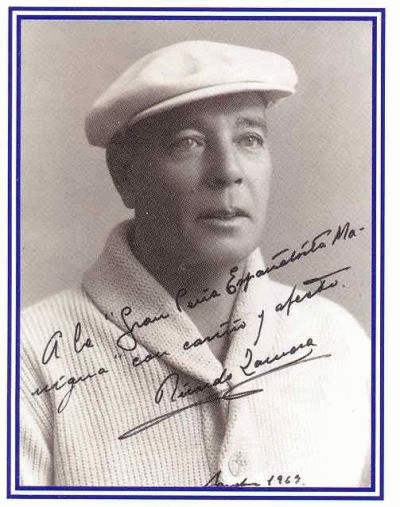 
On September 8, 1978 Ricardo Zamora dies in Barcelona, possibly one of the greatest figures in the club's history. During the decade of the 70 and beginning of the 80 stands out in the Spanish RCD the figure of the Navarrese footballer Rafael Marañón, that with 111 goals became the player that more goals had marked in the history of the club during many years, until it was Surpassed by another icon of the entity, Raúl Tamudo.
The Years 80's and 90's:
The last decades of the club's history have been characterized by irregularity in the final classification of each league, with great campaigns with coaches such as Javier Clemente, (with whom the UEFA Cup final in 1988), and Two descents to Second Division in the decade of the 90 in a context of serious economic crisis, especially during the mandates of Julio Pardo Padrós and Francisco Perelló, being great players of the time Tintín Márquez, Ernesto Valverde, Pichi Alonso, John Lauridsen and Thomas N'Kono among others. Highly remembered among all the fans "pericos" was the participation in the UEFA Cup of the season 1987-88. In this edition the following teams were eliminated: Borussia Mönchengladbach, AC Milan, Inter Milan, TJ Vítkovice and Club Bruges before being unable to overcome in the final and, on penalties, Bayer 04 Leverkusen.
On December 4, 1992, the Spanish RCD was registered in the Mercantile Register as a Public Limited Company, and shortly afterwards, in 1994 the Spanish RCD "B" was created by absorbing the federated rights of FC Cristinenc, Santa Cristina de Aro . With this team a collaboration was maintained for three years before.
In 1995, to adapt to the new Spanish sports legislation, the club modifies slightly its name adding "of Barcelona" at the end and happens to be called Reial Club Deportiu Espanyol of Barcelona, S.A.D., a change that was not exempt of critics.

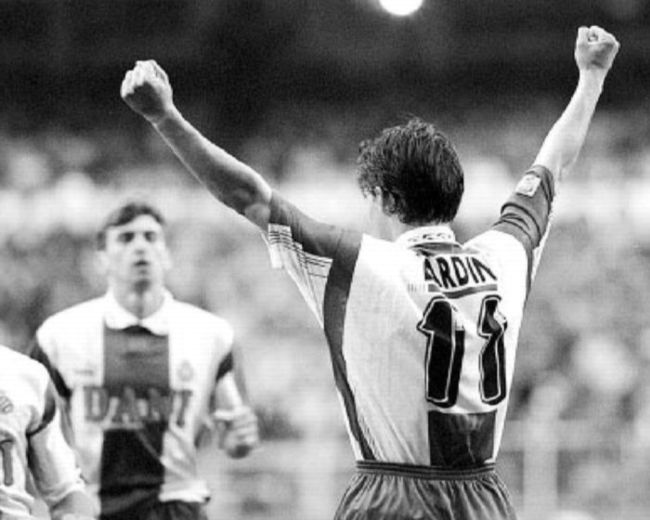 
The player of Espanyol Jordi Lardin, in four matches he got REAL MADRID 7 Goals in league three which were on December 10, 1995 in day 16 in the match of Sarria which won the Espanyol by 3 - 1 Lardin got 1 goal,
and the Day 21 of April of 1996 in day 37 in the Santiago Bernabeu R.Madrid 1 Espanyol 2, with the two goals of Lardin, Total in a season of League it got him 3 goals:

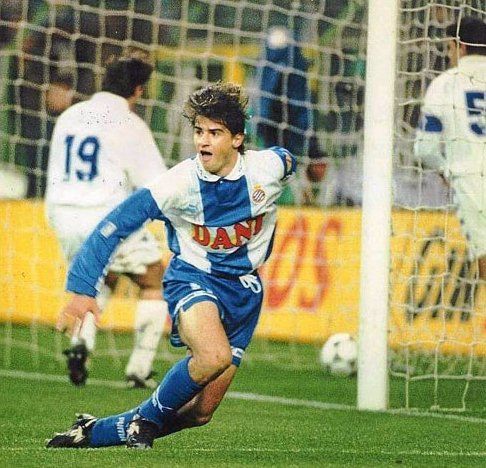 
This same player in the Copa del Rey of the same season on January 11, 1996 and in 1/8 final was the result of Espanyol 4 R. Madrid 1 with three goals by Lardin,
and on January 18, 1996 in the same 1/8 the result was R.Madrid 2 Espanyol 1 with a goal by Lardin, in total that left out the Cup with 4 Goals, R.Madrid and between League and Cup 7 goals a good average dealing with R.Madrid.
 In honor of the centenary of the entity, the club receives the Cross of Sant Jordi Award from the Generalitat of Catalonia, and on November 14, 1999, the game that inaugurated the centenary events at the Montjuic Olympic Stadium, in the that the Spanish RCD defeated the Argentine National Soccer Team by 2 goals to 0. The capital's comeback began with the construction of its own Sports City in San Adrián de Besós, inaugurated in 2001, and the laying of the first stone of the club's new stadium in 2003, located between the municipalities of Cornellá de Llobregat and El Prat de Llobregat, and financed by a loan granted by five financial institutions for a total of 55 million euros.
In honor of the centenary of the entity, the club receives the Cross of Sant Jordi Award from the Generalitat of Catalonia, and on November 14, 1999, the game that inaugurated the centenary events at the Montjuic Olympic Stadium, in the that the Spanish RCD defeated the Argentine National Soccer Team by 2 goals to 0. The capital's comeback began with the construction of its own Sports City in San Adrián de Besós, inaugurated in 2001, and the laying of the first stone of the club's new stadium in 2003, located between the municipalities of Cornellá de Llobregat and El Prat de Llobregat, and financed by a loan granted by five financial institutions for a total of 55 million euros.
Due to the poor economic and sports management of the managers, the club is forced to sell the stadium of Sarriá and thus to mitigate the debt that drags the club. The 21 of June of 1997 play the last party in the stadium of Sarriá, that gained the local set by 3 goals to 2 in front of the Valencia Club of Soccer. A few days after the sale of Sarriá, Daniel Sánchez Llibre is elected president of the entity. The club happens to play their matches in the Olympic Stadium of Montjuic.
A centenary club:
Un club centenario:

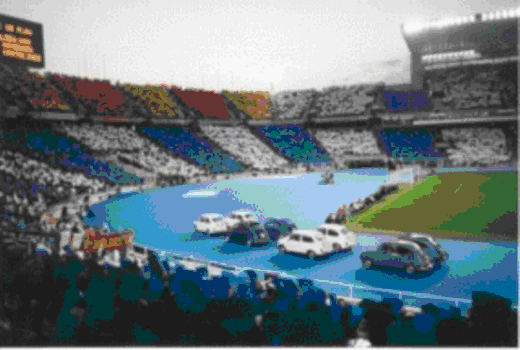 
In honor of the centenary of the organization, the club receives from the Generalitat de Catalunya the Sant Jordi Cross Prize, and on November 14, 1999, the party that inaugurated the centennial events at the Montjuic Olympic Stadium in That the Spanish RCD defeated the Argentine Football Selection by 2 goals to 0. The asset recovery of the entity begins with the construction of an own Sports City in San Adrián de Besós, inaugurated in 2001, and the laying of the first stone Of the new stadium of the club in 2003, located between the municipalities of Cornellá de Llobregat and the Prat de Llobregat, and financed by a loan granted by five financial institutions for a total of 55 million euros.
During this stage, the team is installed in the middle of the classification, with the exception of the seasons 2002/03 and 2005/06 in which the decline is reduced and the 2004/05 season is over. Point to reach the UEFA Champions League, with Miguel Angel Lotina on the bench. With Paco Flores as coach, the club gets its third Copa del Rey in the 1999/00 season, the same year of its centenary, in a final against Atletico Madrid (2-1) at the Estadio de Mestalla. Six years later and with Miguel Ángel Lotina of coach, the fourth Cup of the King is obtained in the Santiago Bernabeu Stadium of Madrid in a final disputed against Real Zaragoza (4-1). At European level, the club participates three times, two of consecutive ones, in the Glass of the UEFA, the seasons 2000/01, 2005/06 and 2006/07. In this last one arrives at the end, that is disputed before the Sevilla FC, and that finally is lost in the penalty shoot-out. This decade is undoubtedly the time with the most official titles in the history of the Spanish RCD in which there were also players of the level of Raúl Tamudo, Ivan de la Peña, Luis García, (these three formed the trio known as " The 3 sharks ") and also Albert Riera, Mauricio Pochettino, Walter Pandiani and Carlos Kameni among others.
At that time the club was recognized as the 10th best team in the world according to IFFHS.

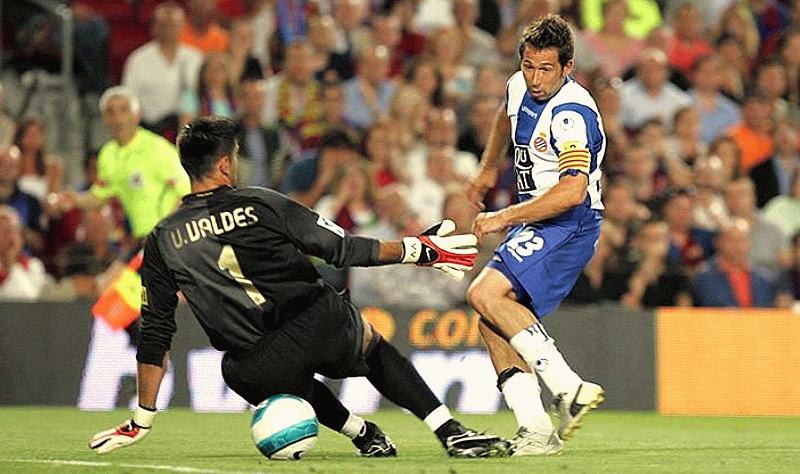 
On June 9, 2007, Raúl Tamudo became the top scorer in history, thus overtaking Rafael Marañón's 111 goals, and getting the total of 113, Raúl Tamudo's most remembered goal is undoubtedly the goal scored in the season 2006/07 to FC Barcelona in the last minute of game in the Nou Camp that cost him the title of the League to the F.C. Barcelona in favor of Real Madrid
The 31 of May of 2009 ended 12 seasons in the Olympic Stadium of Montjuic, after the march of the Stadium of Sarriá, with the party that gained R. C. D. Spanish by 3 goals to 0 before the C.F. In this same encounter Raúl Tamudo achieved a hat-trick and reached the number of 129 goals with the whole Spaniard.
The return home:
Dani Jarque, captain of the first team in the 2009/10 season until his death in August 2009.
After twelve seasons in the Olympic Stadium of Montjuic, the club moved to the Stadium of Cornellá-El Prat.

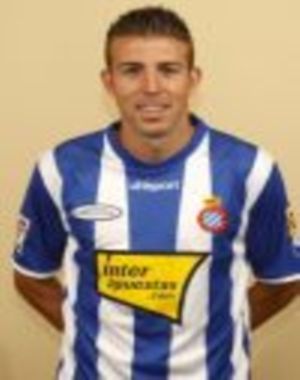 
On August 2, 2009 the new stadium was opened with a match against Liverpool FC with a 3-0 progeny favorable to the parakeets. Luis García Fernández was the author of the first goal in this field followed later by two goals by Ben Sahar. He also scored Raúl Tamudo somewhat unsuccessful after a lack of play. With this inauguration, the club returned to own house after the demolition of the mythical Stadium of Sarria. The new stadium has to be a turning point for the entity in both sports and economics.
Nevertheless, the joy lasted very little to the Spanish fans since 8 of August of that same year took place one of the saddest events in the history of R. C. D. Spanish. Captain Dani Jarque died at the age of 26 in Coverciano, where the club was touring Italy, a cardiac arrest. The club lost its captain and one of its symbols. Currently every minute 21 (dorsal that was) of each party the hobby perica pays him a homage by clapping and singing his name.
On 10 September 2009, the IFFHS published the classification of the best European clubs of the XX century, occupying R. C. D. Spanish position number 98 due to their participation in European competitions.
With the arrival of Mauricio Pochettino to the bench during the season 2008-09 to save to the equipment of the descent to Second Division, objective that fulfilled, the entity carries out a sports project based on the promotion of soccer players raised in the quarry of the club and in Economic austerity. In successive seasons, the blue-and-white team reach salvation with comfort, even fighting at times to enter the UEFA Europa League. Nevertheless, after disputing 14 days of the season 2012-13, the directive of the club decided to stop to Pochettino to have the blanquiazul team colista of the category. A few days later the new parakeet technician, the Mexican Javier Aguirre, was announced, who managed to reverse the situation and reap positive results.
Javier Aguirre continued one more season in the club returning to obtain the permanence in a season of transition. In the summer, Sergio González took the reins that in his first campaign in the top category managed to classify the team for the Copa del Rey semifinals and put the team in a comfortable position on the table. However, in December 2015 the Board of Directors decided to dispense with its services due to the irregularity of the team. Constantin Galca, former player of RCD Espanyol, was chosen as a new coach.
At the same time, the institutional section also produced relevant changes. President Joan Collet and his Board of Directors decided to resign on January 20 for Chen Yanseng to take over the club.

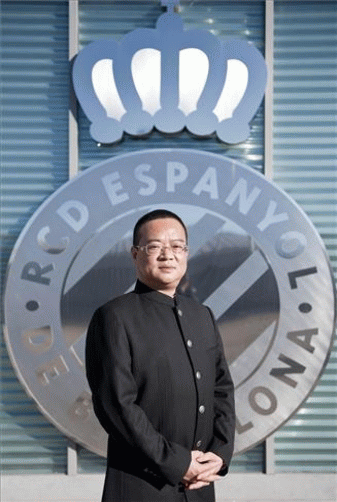 
The owner of the RASTAR business group completed in November 2015 the purchase of more than 50% of the capital stock that allowed him to gain control of the club, although it was not until January 19 that the purchase was confirmed. His entry to RCD Espanyol was decisive to cover different payments with Treasury and suppliers.
History and evolution of the shield:
Shield of the Sociedad Gimnástica Española in 1897, embryo of the club and entity from which the first emblem was taken.
Throughout its history, the R. C. D. Spanish has had a total of seven different shields.
The first of them with the initials of the Spanish Club of Soccer corresponds to the years that go from 1901 to 1906 and it takes the rojigualdos colors. The second one was designed by Eduard Corrons when adopting the colors white and blue in reference to the colors of the coat of arms of Roger de Lauria and was used from 1909 to 1912. From then on after the concession of the real title, with Alfonso XIII, the Same designer modified it adding the real crown and extending the edge of the circumference to introduce the legend "Real Club Deportivo Español".
During the censorship of the Second Spanish Republic the crown and the word "real" were abolished and they were put back after the Spanish Civil War, and concretely in 1940. Thus it lasted until the following change, dated in 1995, when Pere Durán retouched The shield schematizing the crown and the legend was modified putting the name of the entity in Catalan, besides adding the name of the city: «RCD Espanyol de Barcelona».
The current shield has been in force since December 2005 and presents a unique evolution in the crown, with respect to the last design of Pere Durán, in which the four red interior bars increase slightly until completing the interior space.
Simile taken from the Societat Gimnàstica Espanyola (1901-06).
Change of name with national and club colors (1909-10).
Modernization and stylization of the former shield. (1910-12).
First shield of the club with the royal crown granted by the King (1912-31).
Disappearance of monarchical allusions (1931-41).
Anthem:
The R. C. D. Spanish has had three hymns popularly recognized throughout its history. The first one dates from 1975, was work of Ricardo Pastor (letter) and Jose Guardiola (music) and had by name "Somos españolistas". It is a poetry written in Castilian and Catalan dedicated to the colors blanquiazules, the Estadio de Sarriá and Roger de Lauria. The second hymn is undoubtedly the best known, beloved and honored in the stadium by parakeet followers. It dates from 1983 and was the work of Carlos Laporta and Isidro Sola, being also bilingual. In 1997 a version was made totally in Catalan. The club's current anthem was recorded by the Catalan Orfeón and the Orquesta Sinfónica del Vallés. The music was composed by the former director of the orchestra 'La Selvatana', Antoni Mas. The letter is the work of the Spanish historian Juan Segura Palomares. The anthem was presented on November 14, 1999 at the Estadio Olímpico de Montjuic during the opening ceremony of the Centennial. In 2005 the Ibiza group rock 'Statuas d Sal' made a version with more rhythm of the anthem and that was interpreted in the rest of one of the parties disputed in Montjuic.

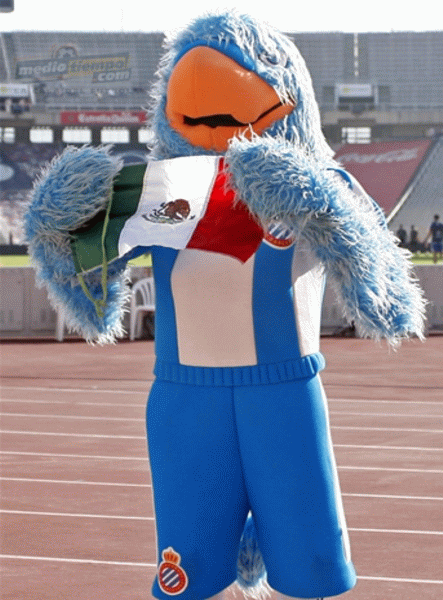 
During the twenties, jokes were published in the weekly El Xut (the chute). At that time, the Catalan comedian Valentí Castanys satirized the followers of R. C. D. Spanish as the four black cats, because of the small number of partners of the entity. In 1929 was released in Spain the famous creation of Pat Sullivan by name Felix the Cat in Castilian and gat perico or gat parakeet in Catalan. Then began to know the followers of R. C. D. Spanish as the quatre gats pericos or the four parakeet cats. It was during the celebration of the 75th anniversary of the Club when it was officially realized a logo in which already appeared a parakeet. Over the years new models of the parakeet have emerged, and in the Estadio de Sarriá the figure of the mascot / disguise has already been implanted. Nowadays a more modern logo has been developed and it appears in the equipment of the equipment. For the recruitment of new members, a new and successful television advertising campaign was carried out in the mid-1990s, in which real parakeets performed various soccer actions such as head or Chilean shots.
Another version is that around the old Stadium of Sarria there were many palm trees, with their corresponding presence of parakeets, and even sold around the stadium to feed them.
To commemorate the centenary of the entity was designed a new pet that was only used in said celebration. His name was Som-hi, Vamos in Castilian and represented a blue-white T-shirt.
Uniforme:
Main article: History of the Real Club Sport Spanish:
Holder uniform: White t-shirt with blue stripe in the center, also blue pants and white stockings. The back is blue with the dorsal and the name of the player in black. The novelty lies in the inclusion of the blue-and-white flag in the sleeves.
Alternative uniform: Red t-shirt with blue and white details, red pants and red tights.
Goalkeeper uniform: T-shirts, trousers and black stockings with pink details.
THE HISTORICAL T-SHIRT YELLOW:

 
Rated G Report violation More Essential Accessories Added: {accessoryName}
The first uniform of the history of the club was yellow after providing one of the first managers of this color from his textile business, with a strip and long trousers (varying the color according to the player). When this manager ceased to participate in the activities of the entity, each player came to provide his clothing in his entirety, but roughly used white T-shirt with blue belt and black or blue trousers in 1901.
After the refounding of the entity during the suspension of activities of the entity between 1906 and 1909, on February 20, 1910 the assembly of partners decides to change the colors and the shield. They adopted the colors white and blue that represented the colors that it was believed that appeared in its coat of arms the admiral Roger de Lauria.Current.
R. C. D. E. Stadium:
The club has used a total of six different football grounds to play their matches as a local before acquiring the land on which the historic Sarriá Stadium was located, first owned by R. C. D. Spanish. Wandering through various terrain in its beginnings, the first one dates from the 1900-01 season, that of its foundation, where it plays the first friendlies in Can Grassot, located in the vicinity of the temple just begun to be built of the Sagrada Familia. That same season, also was used from 10 of March the field Frare Blanch of the Hispania Athletic Club, located near the Tibidabo. However, this field was hardly needed and the subsequent training was done in a hospital Clinic.
For the next soccer course, the year of the inauguration of the Copa Macaya, he moved to the adjacent field to the bullring of Las Arenas, returning months later to the one located at Hospital Clínic Sur. There disputed the first party 30 of November of 1902 before the International Football Club and that finished with local victory by 6-0. They were lands adjoining the Clínic Norte when they settled there from December 6, 1903, remaining there for three years until the activities were paralyzed. In the debut of the date they won 2-0 to Football Club Catalá and two days later they beat FC Barcelona 3-1.
Once reborn the club was officially inaugurated on March 1, 1911 a new field with the meeting before the Spanish Club of Madrid, and that ended with 2-0 for the premises. This stadium called Velodrome Sports Park on Industry Street was popularly known as the «Field of the Beans» and remained in it until it reached one of the most marked dates of whiteness.
The 18 of February of 1923 the Stadium of Sarriá was inaugurated with a meeting before Unió Esportiva de Sants that finished with a 4-1 favorable to the Spaniards. The first goal in this stadium was the work of Vicenç Tonijuan. With the passage of time, the stadium became one of the historical not only of the city but the country, and became the property of the club in the fifties. Also well-known like Can Ràbia was soothes mundialista in the World-wide one of Spain 1982.
Finally the 21 of June of 1997 was disputed the last party in Sarriá in which the RCD Spanish prevailed by 3 to 2 to the Valencia Club of Soccer, being Jose Cobos Castillo the last soccer player with the whitish jersey in scoring a goal in the stadium , While Ivan Campo was the last player to score a goal in the emblematic stadium.
After being built for the Olympic Games of Barcelona 1992, the Olympic Stadium of Montjuïc happened to be the local headquarters of the club. Released by the team on September 7, 1997 with a match corresponding to day 2 of the league championship and which concluded with a draw against Real Club Celta de Vigo, was host until May 31, 2009. That day had Place the last encounter in this stadium - of municipal ownership - defeating Málaga Club de Fútbol 3-0 thanks to a hat trick by Raúl Tamudo as final colophon before moving to an enclosure once again owned by the club, known as Estadio Cornellá-El Prat.

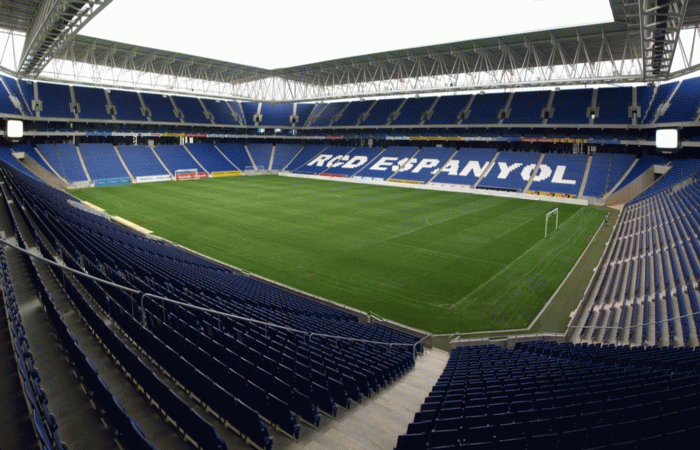 
Known since the year 2016 as R. C. E. E. Stadium, by the acronym of the club, and popularly as Cornellá-El Prat, has a capacity of 40 500 spectators, to be one of the most modern stadiums in Europe; Covered almost entirely, except for the top of the four corners, and be listed by UEFA with the highest category (4).
On May 9, 2003, the foundation stone was placed in the presence, among other authorities, of the President of the Generalitat at that time, Jordi Pujol. The beginning of the works, occurred on November 30, 2005
On August 2, 2009, the new stadium was opened with a match against Liverpool FC with a 3-0 result favorable to parakeets. Luis García was the author of the first goal in this field followed later with two goals by Ben Sahar. He also scored Raúl Tamudo somewhat unsuccessful after a non-existent offside.
The RCDE Stadium took its first year the Stadium Business Award 2010, as the best sports facility of the year, a prize organized by Guinness. In addition, it has an official store of the club.
Between June 2014 and December 2015 the stadium was named Power8 Stadium for a sponsorship agreement between this brand and the club.
Sports City Dani Jarque Sadrià:
In addition, the club has a sports city in the town of San Adrián de Besós, called by all fans in honor of the club's first stadium and, at the same time with the name of the aforementioned city, Sadrià. Officially it is called Sports City Dani Jarque, in memory of the deceased captain of the equipment. It trains both the first team and all the subsidiaries. All the games of the quarry are disputed in these facilities that also has an official store of the club.
IF THERE IS ANYTHING FINDING ANYTHING THAT IS NOT REAL, AND SOMETHING THAT IS MISSING IS BECAUSE I DID NOT GET ALL THE INFORMATION NEEDED FOR A 116 YEAR STORY,
BUT I THINK THAT IT IS EXTREMELY CLOSE.
IF YOU WANT TO ADDRESS ANYTHING,
YOU CAN WRITE THE MAIL THAT IS ON THE LAST PAGE,
THANK YOU:
THE SHORT IS A SAY, BUT WHEN YOU START YOU KNOW:

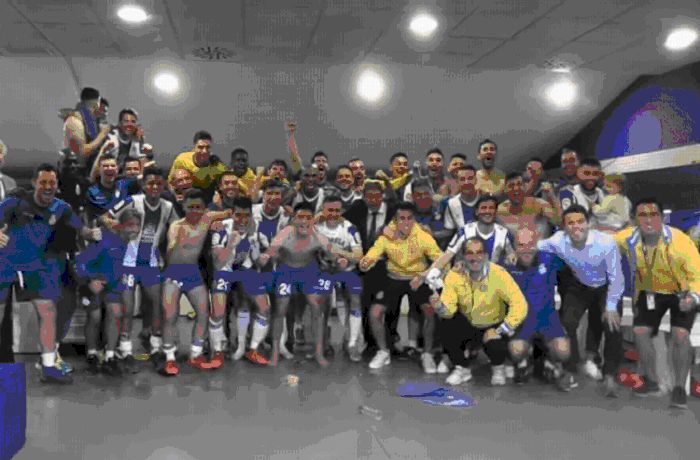 
As of 18-05-2019, the UEFA classification for 2019-2020 was achieved by beating Real Sociedad 2-0 with goals from Rosales and Wu Lei, both in the second half, with one of the best matches of RCD.ESPANYOL this season:

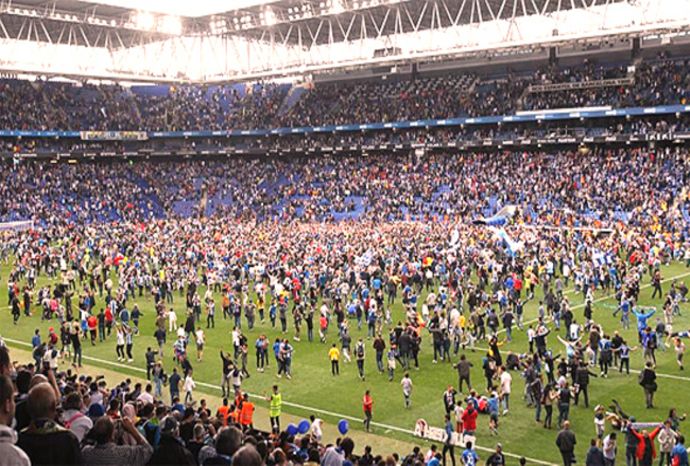 
On 05-18-2019, qualification for the 2019-2020 UEFA was achieved, by beating Real Sociedad by 2 - 0 with goals from Rosales and Wu Lei, both in the second half, in this way we celebrate it all the Parakeets, something we wanted very much but we got it:

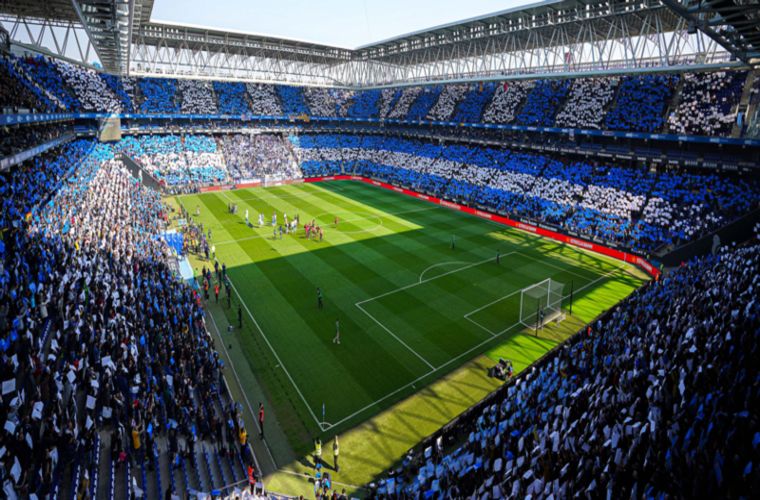 
On 05-18-2019, qualification for the 2019-2020 UEFA was achieved, by beating Real Sociedad by 2 - 0 with goals from Rosales and Wu Lei, both in the second half, in this way we celebrate it all the Parakeets, something we wanted very much but we got it:

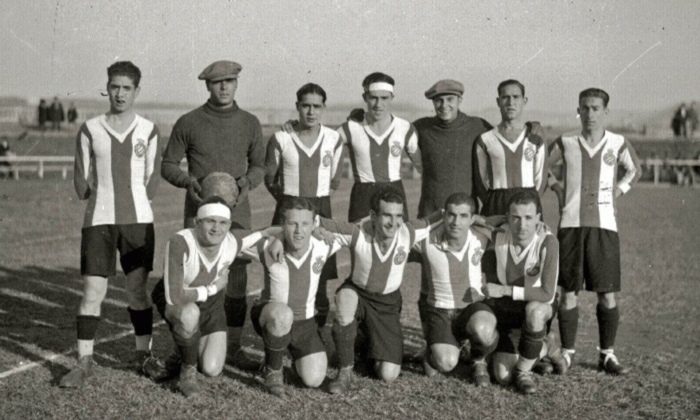 
On this same Day 18-05-2019, was able to reach the 2700 th match in league competition, after 90 years of the first game in history
of the league played in Sarria against Real Union de Irun which ended with the result 3-2 in favor of l'Espanyol:

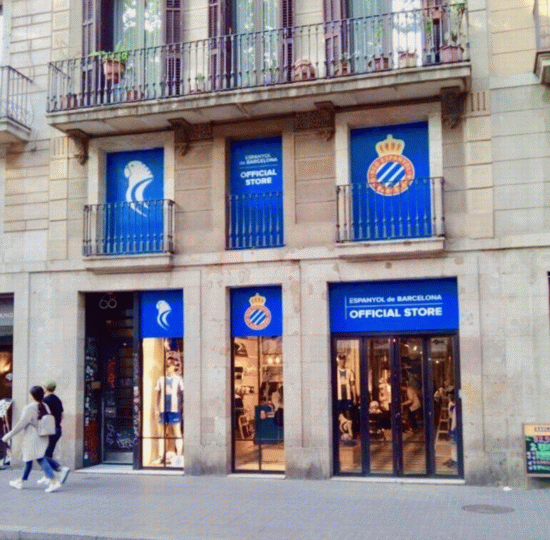 
On Thursday, May 16, 2019, Espanyol took another step to strengthen its brand in its undoubted City, Barcelona, by opening a store, even for only three days, in the heart of the Catalan capital.
Just past the famous Boquería and in front of the majestic Lyceum there is a mini parakeet temple for the use and enjoyment of parakeets. Espanyol has taken the heart of Barcelona, Las Ramblas.
The parrot that enters the store is a first room full of shirts, with the new model. Also with another shirt where you can read 'Join the Darderismo'. And with a huge ceiling that highlights the faces of Sergi Darder, Borja Iglesias, Óscar Melendo and Wu Lei.

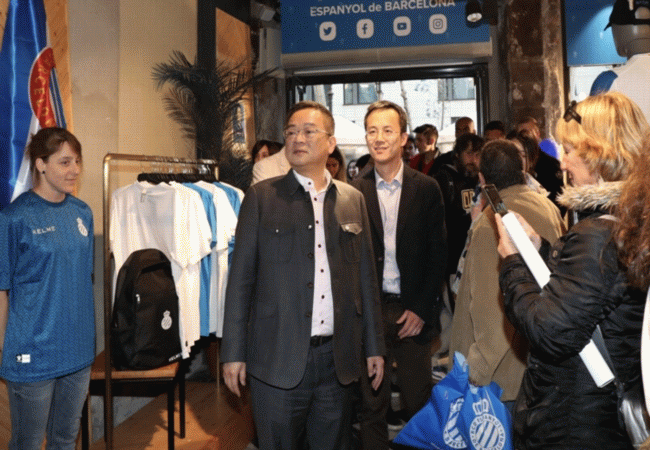 
Not even President Chen Yansheng wanted to miss the start of this new Spanish shop.
Wu Lei The Chinese star cup good part of the blue and white space, with his shirt with the name in Chinese, plus a practically life-size figure. In the background there is a space for the little ones, where Naldo and Rosales signed autographs this afternoon:

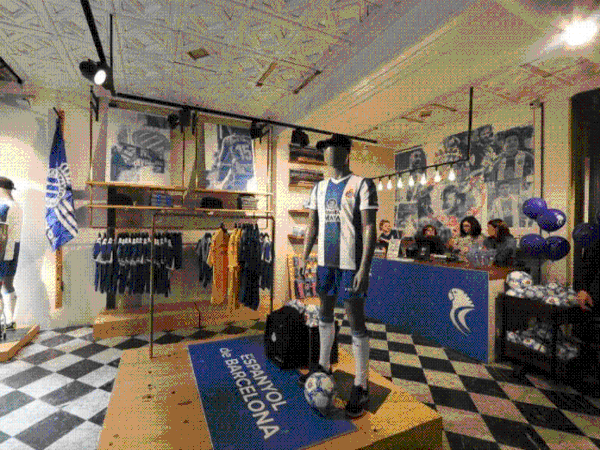 
The RCD Espanyol de Barcelona will open permanently this Friday June 28 the RCDE Store La Rambla, space in which all the official product of the club will be sold: both the game equipment, as well as the technical and casual clothes and various official items with blue and white stamp.
After the good reception that the Pop Up Store had - short sale space - last 16, 17 and 18 May, the parrot club has opted for the definitive and permanent opening of the premises in the same location: La Rambla, 68 , corner with C/.Ferran, in the center of Barcelona.
The new space has 120 m2 and will be open every day, from Monday to Sunday, from 11 am to 9 pm.:

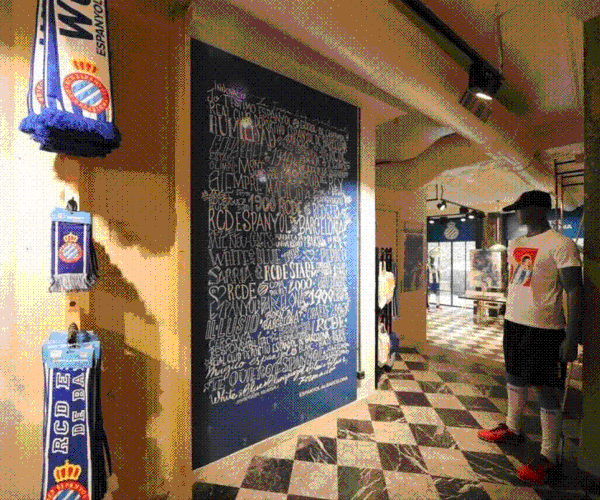 
The opening of the premises responds to the historical demand on the part of partners, fans and parakeets to open a space for sale to the public of official items of the club in the center of Barcelona. Until now, the RCD Espanyol de Barcelona had two official stores located in the Metropolitan Area of Barcelona: The RCDE Store Stadio, located in the RCDE Stadium in Cornellà de Llobregat, and the RCDE Store Ciutat Esportiva Dani Jarque, located in Sant Adrià del Kisses.
With this strategic action, the club continues to promote and strengthen the brand to generate visibility, bring the club closer to its fans and attract new fans in one of the most outstanding tourist epicenters in the city of Barcelona:

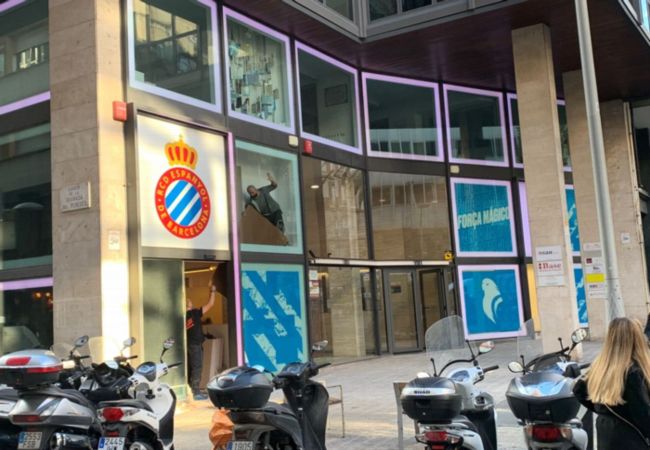 
The opening of the premises responds to the historical demand on the part of parakeet members, fans and followers to open a space for the sale of official club items to the public in the center of Barcelona. Until now, RCD Espanyol de Barcelona had two official stores located in the Metropolitan Area of Barcelona: The RCDE Store Stadio, located in the RCDE Stadium in Cornellà de Llobregat, and the RCDE Store Ciutat Esportiva Dani Jarque, located in Sant Adrià del Kisses.
With this strategic action, the club continues to promote and strengthen the brand to generate visibility, bring the club closer to its fans and attract new fans in the city center of Barcelona:

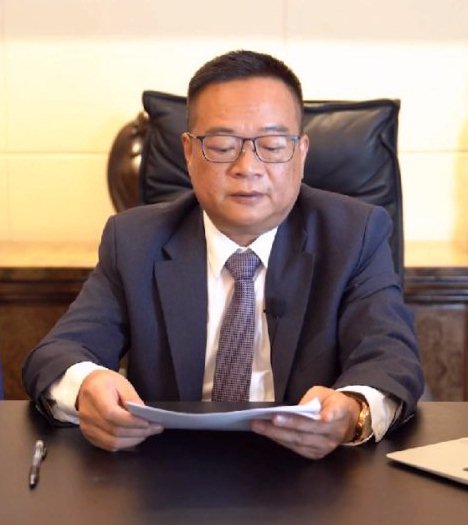 
The current President and owner of R.C.D. ESPANYOL Mtr, CHEN YANSENG, working to make us bigger every day, although from afar no detail of the team is lost, RCD Espanyol de Barcelona:

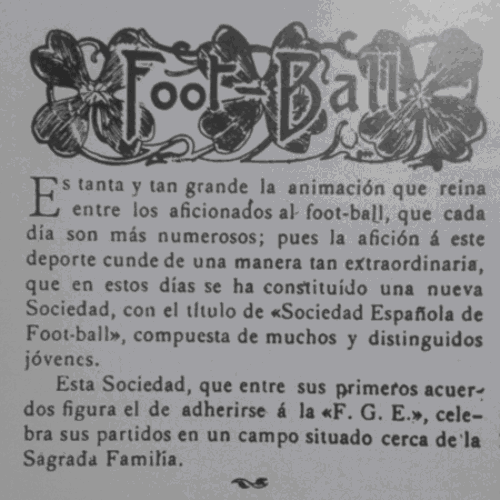 
1st Act of Accession to the F.G.E.
Gimnàstica Federation Espanyola:
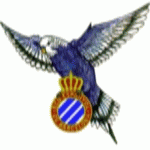
Clicking Pericu happens to the Homepage


|
©
Copyright Antonio Torres 1998 = Last updated 2022. Legal warning |
|
|
 Català:
Català:
 Castellà:
Castellà:








































